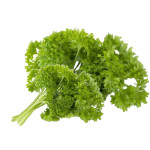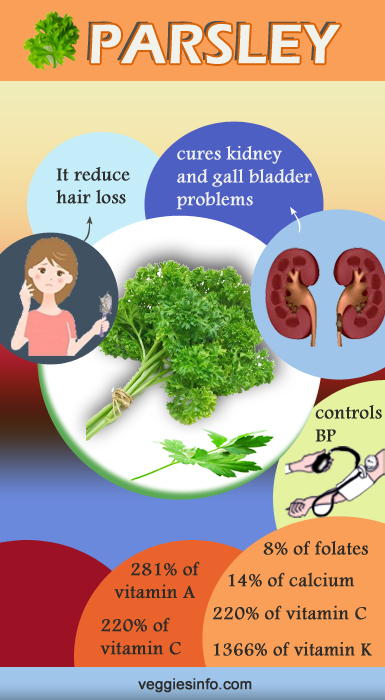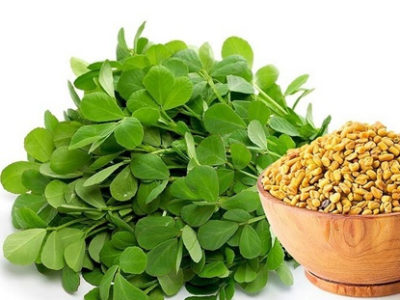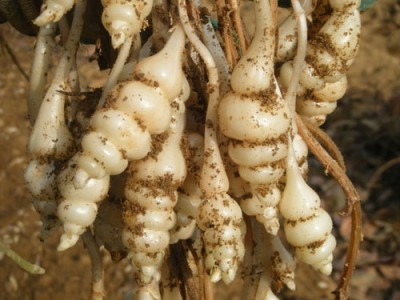
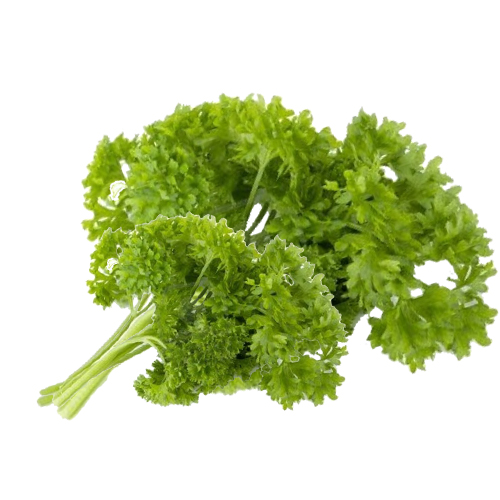
Parsley- Nutrition Guide and its Healthy Properties
About Parsley
Scientifically known as Petroselinum crispum; It belongs to the Petroselinum genus and the family of apiaceae. The word parsley is derived from two names merged together; the old English word petersilie and the French word peresil which in return is again derived from petrosilium a Latin word.It grows in moist soil and the best time to grow parsley is summer time. Garden parsley being a biennial plant (a plant that grows twice a year) survives the best in sub tropical or tropical climatic regions. Growing in the moderate temperature of 22 degree to 30 degrees this vegetable takes a period of 6 weeks to shoot up and be ready to be consumed. There are two species of parsley one being the flat leafed that can be easily cultivated as it has strong flavours that enhances the dish ; the other being the root parsley also known as hamburg root parsley that looks like turnip but is not closely related to the turnip family.
Nutrition Value
- Contains 8% of folates 220% of vitamin C 281% of vitamin A 1366% of vitamin K 14% of calcium 77.5% of iron and 5561 mcg of zeaxanthin 5054 mcg of carotene-beta.
- Existing kidney and gall bladder problems.
Health Benefits
- Parsley essential oil, when massaged into the scalp, may reduce hair loss.
- Parsley tea relaxes stiff muscles and Encourages Digestion.
- Help control your blood pressure.
| Principle | Nutrient Value | Percentage of RDA |
|---|---|---|
| Energy | 36 Kcal | 1.5% |
| Carbohydrates | 6.33 g | 5% |
| Protein | 2.97 g | 5% |
| Total Fat | 0.8 g | 3% |
| Cholesterol | 0 mg | 0% |
| Dietary Fiber | 3.3 g | 8.5% |
| Vitamins | ||
| Folates | 152 µg | 38% |
| Niacin | 1.313 mg | 8% |
| Pantothenic acid | 0.400 mg | 8% |
| Pyridoxine | 0.090 mg | 7% |
| Riboflavin | 0.098 mg | 7.5% |
| Thiamin | 0.086 mg | 7% |
| Vitamin A | 8424 IU | 281% |
| Vitamin C | 133 mg | 220% |
| Vitamin E | 0.75 mg | 5% |
| Vitamin K | 1640 µg | 1366% |
| Electrolytes | ||
| Sodium | 56 mg | 4% |
| Potassium | 554 mg | 12% |
| Minerals | ||
| Calcium | 138 mg | 14% |
| Copper | 0.149 mg | 16.5% |
| Iron | 6.20 mg | 77.5% |
| Magnesium | 50 mg | 12.5% |
| Manganese | 0.160 mg | 7% |
| Phosphorus | 58 mg | 8% |
| Zinc | 1.07 mg | 10% |
| Phyto-nutrients | ||
| Carotene-ß | 5054 µg | — |
| Crypto- xanthin-ß | 0 µg | — |
| Lutein- zeaxanthin | 5561 µg | — |
This food is just more than a garnish on top of your plate as said by many health experts. One cup of parsley chopped into 30.4 grams equals to 11 calories which makes it a low density energy food. People watching their weight by following the 2000 calorie a day can add parsley to their diet. It brings you a promise of a healthy heart. This leafy vegetable has contents of folic acid and vitamin B it plays a major role in protecting your heart; it controls the production of homocysteine a dangerous compound that increases the risk of heart attacks, strokes and failures. Folic acid rich it helps in reducing the chances of cancer in body; prevention of breast cancer, prostate cancer, colon cancer and cervix cancer can be possible if people incorporate parsley in their diet. Prevention and cure of bone related problems like arthritis can be possible to an extent as parsley is rich in Vitamin C. The anti inflammatory property present in it protects the body and contributes in increasing the immunity of the body.
How To Enjoy Parsley
Chopped parsley can be added to any food just to enhance its beauty, boiled kidney beans with corn kennels, peppers and tomatoes with chopped parsley will make a refreshing salad.
This can be pureed and be used to make cream of parsley soup, it can be added to Italian and Mediterranean cuisine as it compliments well with their ingredients.It can be used to make marinating chicken and turkey; marination made of parsley lemon zest and chopped garlic gives a zesty taste to the meat.

